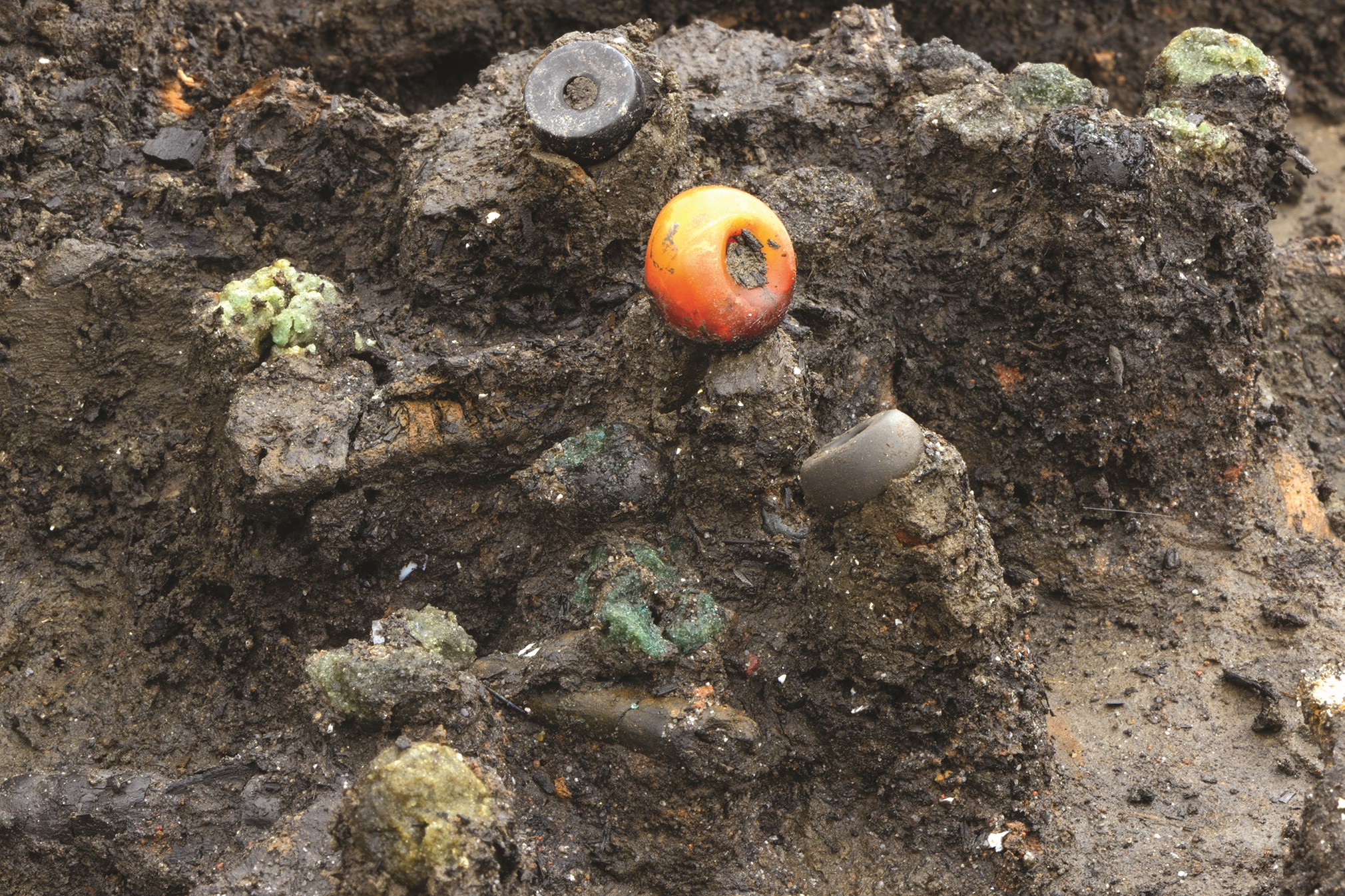The Must Farm Story Told in New Publications
New books published today tell the remarkable story of the Must Farm pile-dwelling settlement in Whittlesey, Cambridgeshire.
The discovery of this significant Bronze Age site – “Peterborough’s Pompei” – has given an extraordinary insight into everyday life almost 3,000 years ago. These new volumes, published by the McDonald Institute for Archaeological Research, document the extensive archaeological excavation work, analysis, and research carried out and detail the discoveries made.
The Must Farm settlement dates to the end of the Bronze Age (850 BC). The circular wooden houses are believed to be the best-preserved Bronze Age dwellings ever found in Britain.
The settlement was made from trees taken from local woodland, where its inhabitants also hunted wild boar and red deer.
It is now known that the site was only occupied for between 9 months and a year before a catastrophic fire destroyed it. The cause of the fire is still a mystery.
The fire spread quickly, and as the buildings burned, their flexible floors collapsed, causing their contents to drop into the muddy river beneath, where they were remarkably preserved.
The vegetation in the river helped to cushion the material falling from the structures, preventing damage. The items landed directly underneath where they had been stored in the houses, giving archaeologists a direct insight into how the roundhouses were used.
Thousands of objects survived, including almost 200 wooden artefacts, over 150 fibre and textile items, 128 pottery vessels and more than 90 pieces of metalwork.
Rare personal items discovered included:
- Some of the finest decorated textiles produced in Europe at that time
- Pots and jars complete with meals and utensils
- Exotic glass beads, some of which were manufactured in the Middle East
- The footprints of people who once lived in the settlement were also found
New publications
2 new Open Access publications uncovering the remarkable Must Farm archaeological investigation – 'Must Farm Pile-Dwelling Settlement: Volumes 1 and 2' – are the culmination and completion of the Must Farm project supported by Historic England and Forterra.
Volume 1 (general synthesis) is OpenAccess online and published in book form from Pen and Sword (priced at £45).
Volume 2 (specialist reports) is OpenAccess and digital only.
Exhibition: Introducing Must Farm, a Bronze Age Settlement
From April, there will be an opportunity to see some of the preserved and unique objects that the Cambridge Archaeological Unit has uncovered.
'Introducing Must Farm, a Bronze Age Settlement' is an insightful, engaging and free to visit exhibition at Peterborough Museum & Art Gallery, supported by Historic England. It will be open to the public from 27 April to 28 September.
The exhibition aims to engage visitors of all ages to learn about the excavation, how and why it took place, and the stories that have emerged from the research. The exhibition includes physical objects from the dig, such as a range of pottery, textiles, jewellery and a large illustration of inside one of the roundhouses, to give visitors a sense of what everyday Bronze Age life was like in the Fens.
Peterborough Museum & Art Gallery
27 April to 28 September 2024
For more details, visit: peterboroughmuseum.org.uk
Investigating Must Farm
The major £1.1 million excavation project was funded by Historic England and landowner Forterra. It was carried out by the Cambridge Archaeological Unit of the University of Cambridge. The remains were removed for recording and analysis due to concerns about the location and future preservation of the site.
The Must Farm site is close to modern-day Whittlesey, Cambridgeshire, and sits astride a prehistoric watercourse inside the Flag Fen basin. There is no public access to the site.
The discoveries made at Must Farm are truly astonishing. They have helped to broaden our understanding of life in the Bronze Age, connecting us directly with communities from the past and helping us to understand a way of life that was more sophisticated than we could have imagined. I’m so proud of this partnership project and look forward to seeing the results and analysis of this amazing excavation laid out in these beautifully produced volumes





